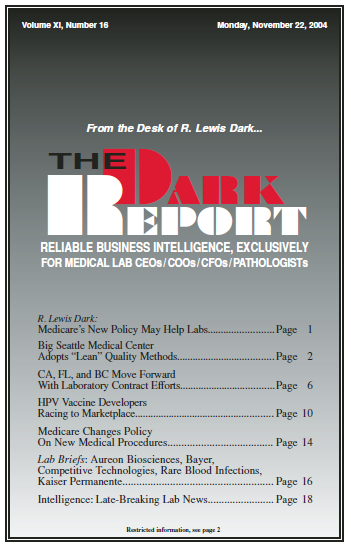CEO SUMMARY: Laboratory and pathology services at Virginia Mason Medical Center are an integral part of its hospital-wide Lean quality management initiative. Because of the importance of lab test data to so many clinical services, the laboratory often finds itself making key contributions in the process improvement efforts mounted by such clinical services as the …
Big Seattle Med Center Adopts “Lean” Methods Read More »
To access this post, you must purchase The Dark Report.


